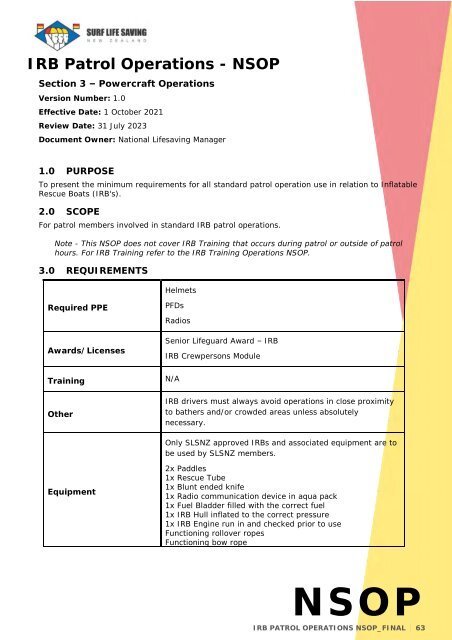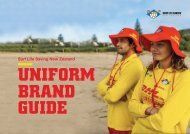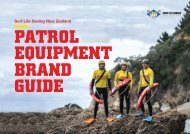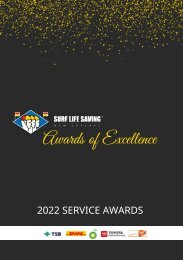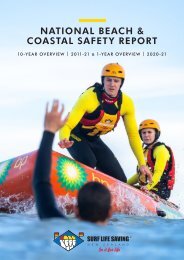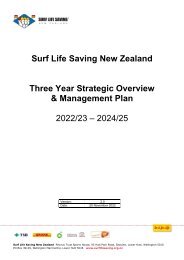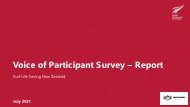National Standard Operating Procedures - Jul 2022
Full NSOP Manual
Full NSOP Manual
You also want an ePaper? Increase the reach of your titles
YUMPU automatically turns print PDFs into web optimized ePapers that Google loves.
Lightning - NSOP<br />
Section 2 – Health & Safety Management<br />
Version Number: 1.0<br />
Effective Date: 1 October 2021<br />
Review Date: 30 April 2023<br />
Document Owner: <strong>National</strong> Lifesaving Manager<br />
1.0 PURPOSE<br />
To outline procedures in the event of an electrical storm.<br />
Note - All notes are to be indented and italicised.<br />
2.0 SCOPE<br />
All surf lifesaving operations and all activities related to SLSNZ and Clubs.<br />
3.0 REQUIREMENTS<br />
Required PPE<br />
N/A<br />
Awards/Licenses<br />
N/A<br />
Training<br />
N/A<br />
Other<br />
N/A<br />
Equipment<br />
N/A<br />
4.0 INTRODUCTION<br />
The 30/30 Rule is recommended for lightning safety in the New Zealand <strong>Standard</strong> on Lightning<br />
Protection. A flash-to-bang count of 30 seconds or less is a guide to the suspension of activity.<br />
Additionally, the following equation can help give an idea of how far away a storm is.<br />
Distance of storm (in km)=Time between flash of lightning & clap of thunder (in seconds)<br />
3 (km)<br />
When the flash to bang count is 30 seconds, this indicates that the lightning is around 10km away.<br />
This is associated with significant risk that a lightning strike could be at the patrol area.<br />
There are two parts to the 30/30 rule:<br />
1) If the flash-to-bang count is 30 seconds or less, follow the procedure below.<br />
2) Wait 30-minutes after the electrical storm has passed to resume the activity.<br />
NSOP<br />
LIGHTNING NSOP_FINAL 56


